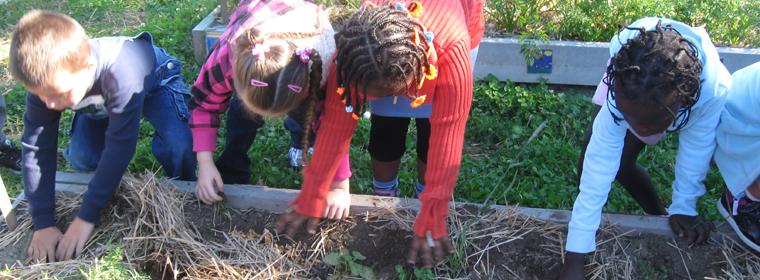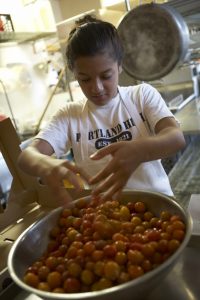Maine Garden to Lunchroom

Tips for How Schools Can Grow or Buy Local Produce Safely
By Dr. Jason Bolton, Assistant Extension Professor for Food Safety, and Dr. David Handley, Extension Vegetable and Small Fruit Specialist
The Center for Disease control (CDC) estimates that each year one in six Americans (48 million people) gets sick as a result of foodborne diseases. With the trend of growing or buying locally grown produce increasing rapidly, it is vital to understand proper procedures for preventing foodborne illness.
The following information is intended to provide schools with proper knowledge to safely grow, purchase, and prepare locally grown produce.
Information is broken up into easy-to- follow sections:
- Preparing the Garden for Planting
- Maintaining the Garden
- Personal Hygiene
- Harvesting Garden Produce
- Storing Garden Produce
- Preparing and Serving Fresh Garden Produce
Foodborne illness
 Foodborne illness stems from food safety hazards of biological, chemical or physical origins. The vast majority of foodborne illness comes from biological based hazards like bacteria, viruses, mold or parasites. Some of these biological hazards can make you extremely sick and these are referred as “pathogens.” Examples of pathogens that you may be familiar with are bacteria such as E. coli 0157:H7, Listeria monocytogenes, salmonella, Staphylococcus aureus or Campylobacter. Bacteria are abundant in nature and can be found in water, soil, or plants, but animals and humans are the most common source of contamination in foods.
Foodborne illness stems from food safety hazards of biological, chemical or physical origins. The vast majority of foodborne illness comes from biological based hazards like bacteria, viruses, mold or parasites. Some of these biological hazards can make you extremely sick and these are referred as “pathogens.” Examples of pathogens that you may be familiar with are bacteria such as E. coli 0157:H7, Listeria monocytogenes, salmonella, Staphylococcus aureus or Campylobacter. Bacteria are abundant in nature and can be found in water, soil, or plants, but animals and humans are the most common source of contamination in foods.
Water from unsafe sources such as ponds or streams can be a source of contamination in your garden. The general hazards associated with water contamination are viruses such as Hepatitis A or parasites like cyclospora cayetanensis.
A common practice of the past was scraping or cutting away any mold found on the surface of foods, and eating the remainder. This is a poor practice due to the presence of mold toxins called mycotoxins that may remain in the flesh. Many of these toxins such as patulin found on moldy apples, can be carcinogenic, (cancer causing).
Although uncommon, chemical hazards can occur in the garden or on farms, in the form of cleaners, sanitizers, pesticides, heavy metals (mercury, arsenic, lead) or fertilizers. They generally stem from soil or well water contaminates, or may be the result of misuse by people mixing or applying chemicals on or near the garden.
